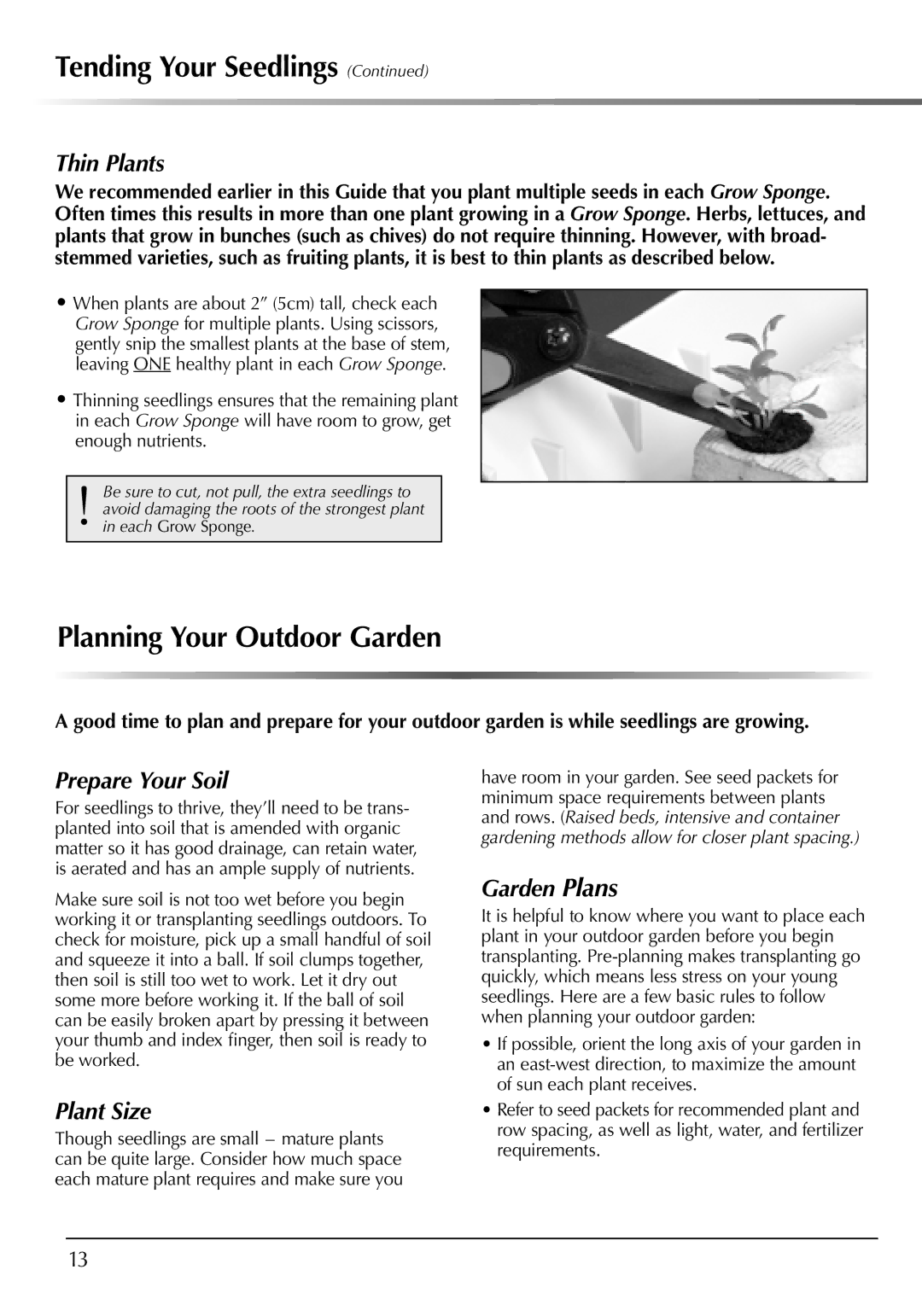
Tending Your Seedlings (Continued)
Thin Plants
We recommended earlier in this Guide that you plant multiple seeds in each Grow Sponge. Often times this results in more than one plant growing in a Grow Sponge. Herbs, lettuces, and plants that grow in bunches (such as chives) do not require thinning. However, with broad- stemmed varieties, such as fruiting plants, it is best to thin plants as described below.
•When plants are about 2” (5cm) tall, check each Grow Sponge for multiple plants. Using scissors, gently snip the smallest plants at the base of stem, leaving ONE healthy plant in each Grow Sponge.
•Thinning seedlings ensures that the remaining plant in each Grow Sponge will have room to grow, get enough nutrients.
!Be sure to cut, not pull, the extra seedlings to avoid damaging the roots of the strongest plant in each Grow Sponge.
Planning Your Outdoor Garden
A good time to plan and prepare for your outdoor garden is while seedlings are growing.
Prepare Your Soil
For seedlings to thrive, they’ll need to be trans- planted into soil that is amended with organic matter so it has good drainage, can retain water, is aerated and has an ample supply of nutrients.
Make sure soil is not too wet before you begin working it or transplanting seedlings outdoors. To check for moisture, pick up a small handful of soil and squeeze it into a ball. If soil clumps together, then soil is still too wet to work. Let it dry out some more before working it. If the ball of soil can be easily broken apart by pressing it between your thumb and index finger, then soil is ready to be worked.
Plant Size
Though seedlings are small – mature plants can be quite large. Consider how much space each mature plant requires and make sure you
have room in your garden. See seed packets for minimum space requirements between plants and rows. (Raised beds, intensive and container gardening methods allow for closer plant spacing.)
Garden Plans
It is helpful to know where you want to place each plant in your outdoor garden before you begin transplanting.
•If possible, orient the long axis of your garden in an
•Refer to seed packets for recommended plant and row spacing, as well as light, water, and fertilizer requirements.
13
